Cooperative Spatial Retreat for Resilient Drone Networks †
Abstract
:1. Introduction
2. Background
2.1. Net-Drones
2.2. Localization Techniques
2.2.1. Centralized Localization Techniques
2.2.2. Decentralized Localization Techniques
Range-Based Localization Techniques
Range-Free Localization Techniques
3. Cooperative Spatial Retreat (CSR)
3.1. Underlying Idea of CSR
3.2. Cooperative Spatial Retreat Algorithm
| Algorithm 1 Cooperative spatial retreat of net-drones |
|
3.3. Remarks on the Performance of the CSR Scheme
4. Performance Evaluation
4.1. Comparison of Schemes
4.2. Influence of the Size of the Communication Failure Area
4.3. Evacuate to the Nearest Outside Drone
4.4. Cooperative Spatial Retreat
5. Conclusions
Acknowledgments
Author Contributions
Conflicts of Interest
References
- Li, S.; Da Xu, L.; Zhao, S. The Internet of things: A survey. Inf. Syst. Front. 2015, 17, 243–259. [Google Scholar] [CrossRef]
- Park, K.-J.; Kim, J.; Lim, H.; Eun, Y. Robust path diversity for network quality of service in cyber-physical systems. IEEE Trans. Ind. Inform. 2014, 10, 2204–2215. [Google Scholar] [CrossRef]
- Park, K.-J.; Zheng, R.; Liu, X. Cyber-physical systems: Milestones and research challenges. Comput. Commun. 2012, 36, 1–7. [Google Scholar] [CrossRef]
- Pace, P.; Aloi, G.; Caliciuri, G. A mission-oriented coordination framework for teams of mobile aerial and terrestrial smart objects. Mob. Netw. Appl. 2016, 21, 708–725. [Google Scholar] [CrossRef]
- Park, K.-N.; Kang, J.-H.; Cho, B.-M.; Park, K.-J.; Kim, H. Handover management of net-drones for future Internet platforms. Int. J. Distrib. Sens. Netw. 2016, 2016, 5760245. [Google Scholar] [CrossRef]
- Sun, J.; Li, B.; Jiang, Y.; Wen, C.Y. A Camera-based target detection and positioning UAV system for search and rescue (SAR) purposes. Sensors 2016, 16, 1778. [Google Scholar] [CrossRef] [PubMed]
- Shu, Z.; Qian, Y.; Song, C. On physical layer security for cognitive radio networks. IEEE Netw. 2013, 27, 28–33. [Google Scholar]
- Ma, K.; Zhang, Y.; Trappe, W. Mobile network management and robust spatial retreats via network dynamics. In Proceedings of the IEEE International Conference on Mobile Adhoc and Sensor Systems, Washington, DC, USA, 7–10 November 2005. [Google Scholar]
- Yang, T.; Li, G.; Li, J.; Zhang, Y.; Zhang, X.; Zhang, Z.; Li, Z. A ground-based near infrared camera array system for UAV auto-landing in GPS-denied environment. Sensors 2016, 16, 1393. [Google Scholar] [CrossRef] [PubMed]
- Ammari, H.M.; Angela, J.C. Sensor localization in three-dimensional space: A survey. In Handbook of Research on Wireless Sensor Network Trends; IGI Global: Hershey, PA, USA, 2016; pp. 120–144. [Google Scholar]
- Halder, S.; Amrita, G. A survey on mobile anchor assisted localization techniques in wireless sensor networks. Wirel. Netw. 2016, 22, 2317–2336. [Google Scholar] [CrossRef]
- Wang, J.; Ghosh, R.K.; Das, S.K. A survey on sensor localization. J. Control Theory Appl. 2010, 8, 2–11. [Google Scholar] [CrossRef]
- Almuzaini, K.K.; Gulliver, A. Range-based localization in wireless networks using density-based outlier detection. Wirel. Sens. Netw. 2010, 2, 807. [Google Scholar] [CrossRef]
- Alrajeh, N.A.; Bashir, M.; Shams, B. Localization techniques in wireless sensor networks. Int. J. Distrib. Sens. Netw. 2013, 2013, 304628. [Google Scholar] [CrossRef]
- Ding, C.; Qi, H.D. Convex Euclidean distance embedding for collaborative position localization with NLOS mitigation. Comput. Optim. Appl. 2017, 66, 187–218. [Google Scholar] [CrossRef]
- Stojkoska, B. A taxonomy of localization techniques based on multidimensional scaling. In Proceedings of the 39th International Convention on Information and Communication Technology, Electronics and Microelectronics, Opatija, Adriatic Coast, Croatia, 30 May–3 June 2016. [Google Scholar]
- Zhao, C.; Xu, Y.; Huang, H. Weighted centroid localization based on compressive sensing. Wirel. Netw. 2014, 20, 1527–1540. [Google Scholar] [CrossRef]
- He, T.; Huang, C.; Blum, B.M.; Stankovic, J.A.; Abdelzaher, T. Range-free localization schemes for large scale sensor networks. In Proceedings of the 9th Annual International Conference on Mobile Computing and Networking, San Diego, CA, USA, 14–19 September 2003. [Google Scholar]
- Gayan, S.; Dileeka, D. Improved DV-Hop algorithm through anchor position re-estimation. In Proceedings of the IEEE Asia Pacific Conference on Wireless and Mobile, Bali, Indonesia, 28–30 August 2014. [Google Scholar]
- Kumar, S.; Lobiyal, D.K. An advanced DV-Hop localization algorithm for wireless sensor networks. Wirel. Pers. Commun. 2013, 71, 1365–1385. [Google Scholar] [CrossRef]
- Xu, W.; Ma, K.; Trappe, W.; Zhang, Y. Jamming sensor networks: Attack and defense strategies. IEEE Netw. 2006, 20, 41–47. [Google Scholar]
- Li, B.; Jiang, Y.; Sun, J.; Cai, L.; Wen, C.Y. Development and testing of a two-UAV communication relay system. Sensors 2016, 16, 1696. [Google Scholar] [CrossRef] [PubMed]
- Park, C.; Cho, N.; Lee, K.; Kim, Y. Formation flight of multiple uavs via onboard sensor information sharing. Sensors 2015, 15, 17397–17419. [Google Scholar] [CrossRef] [PubMed]
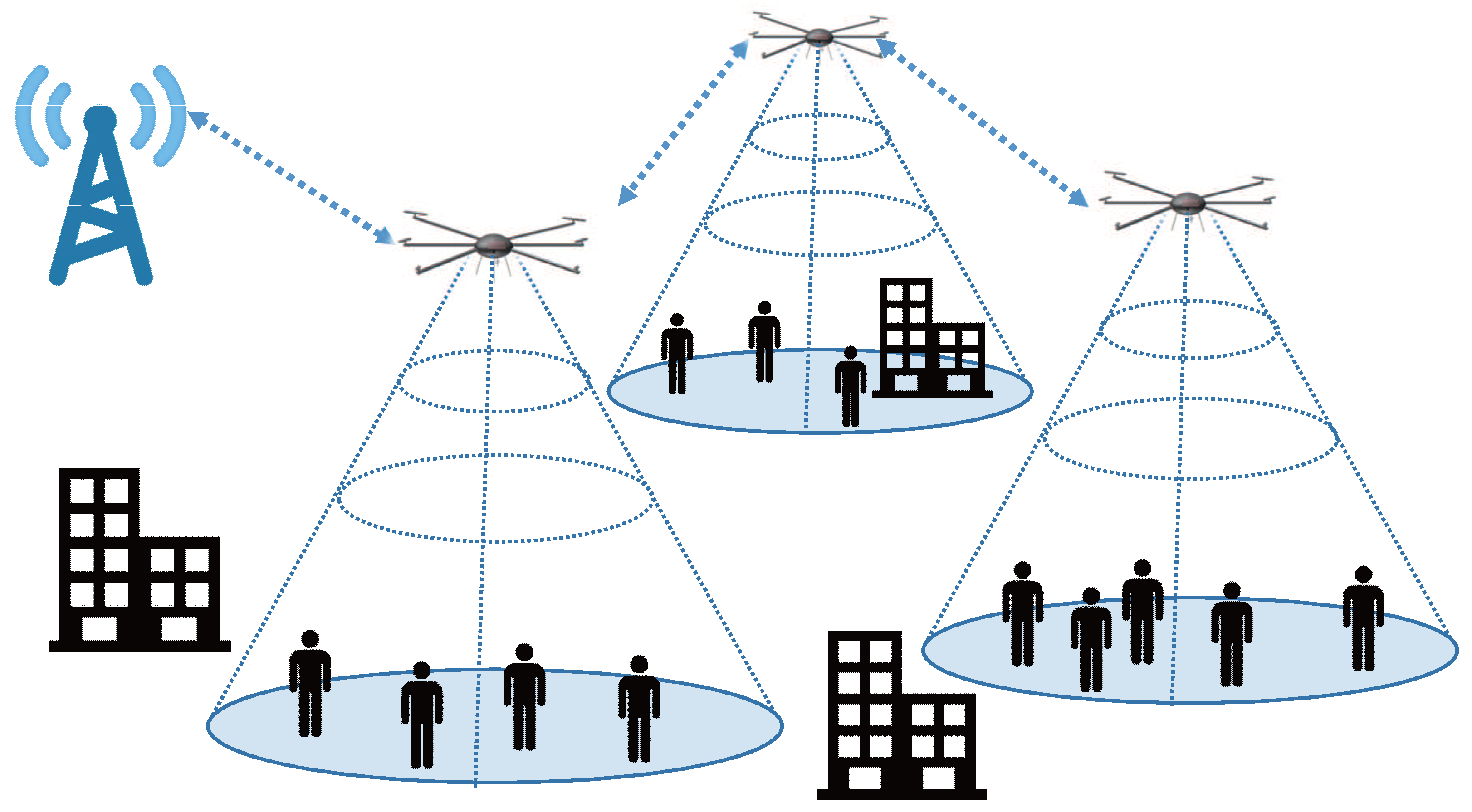
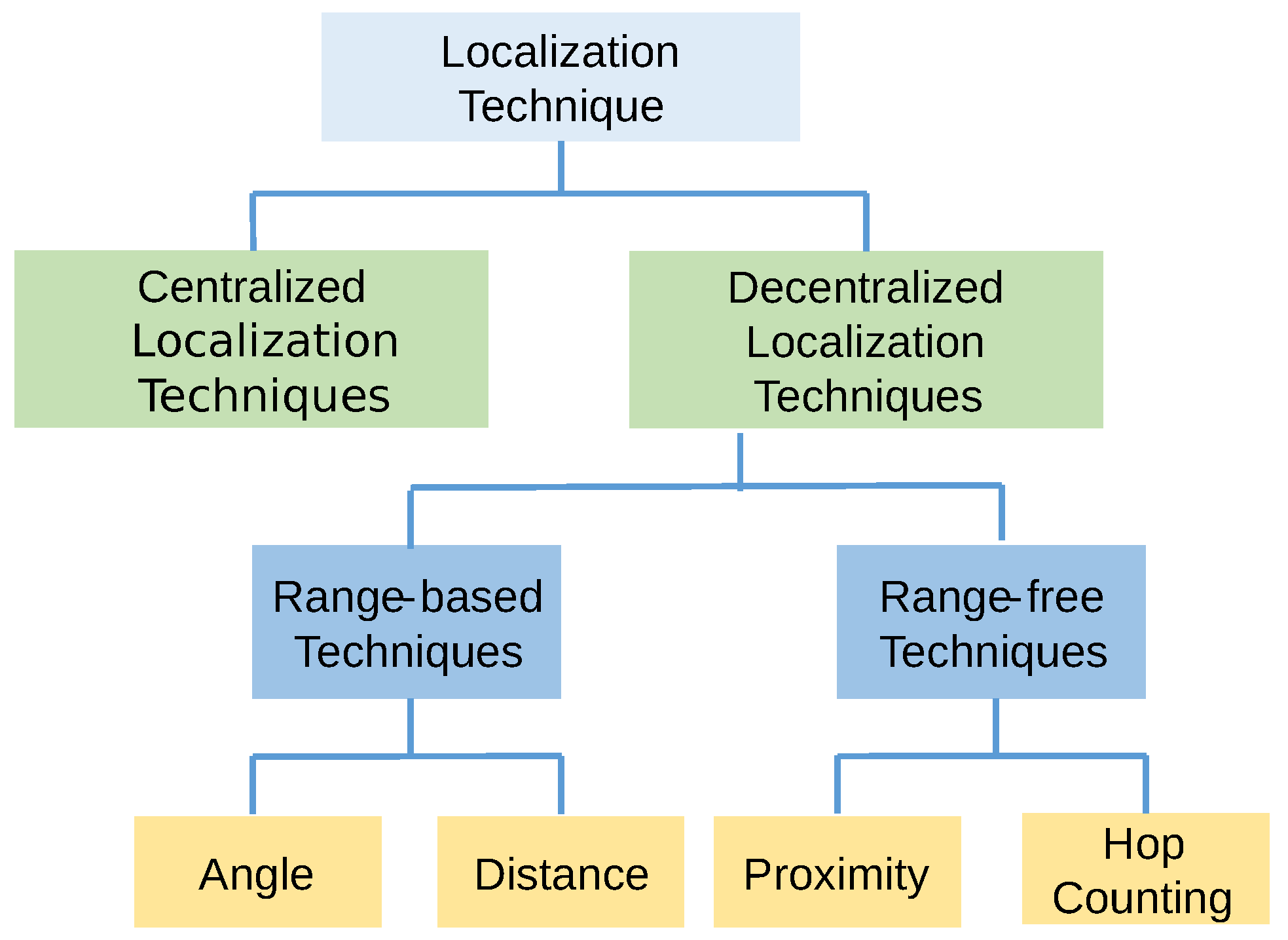
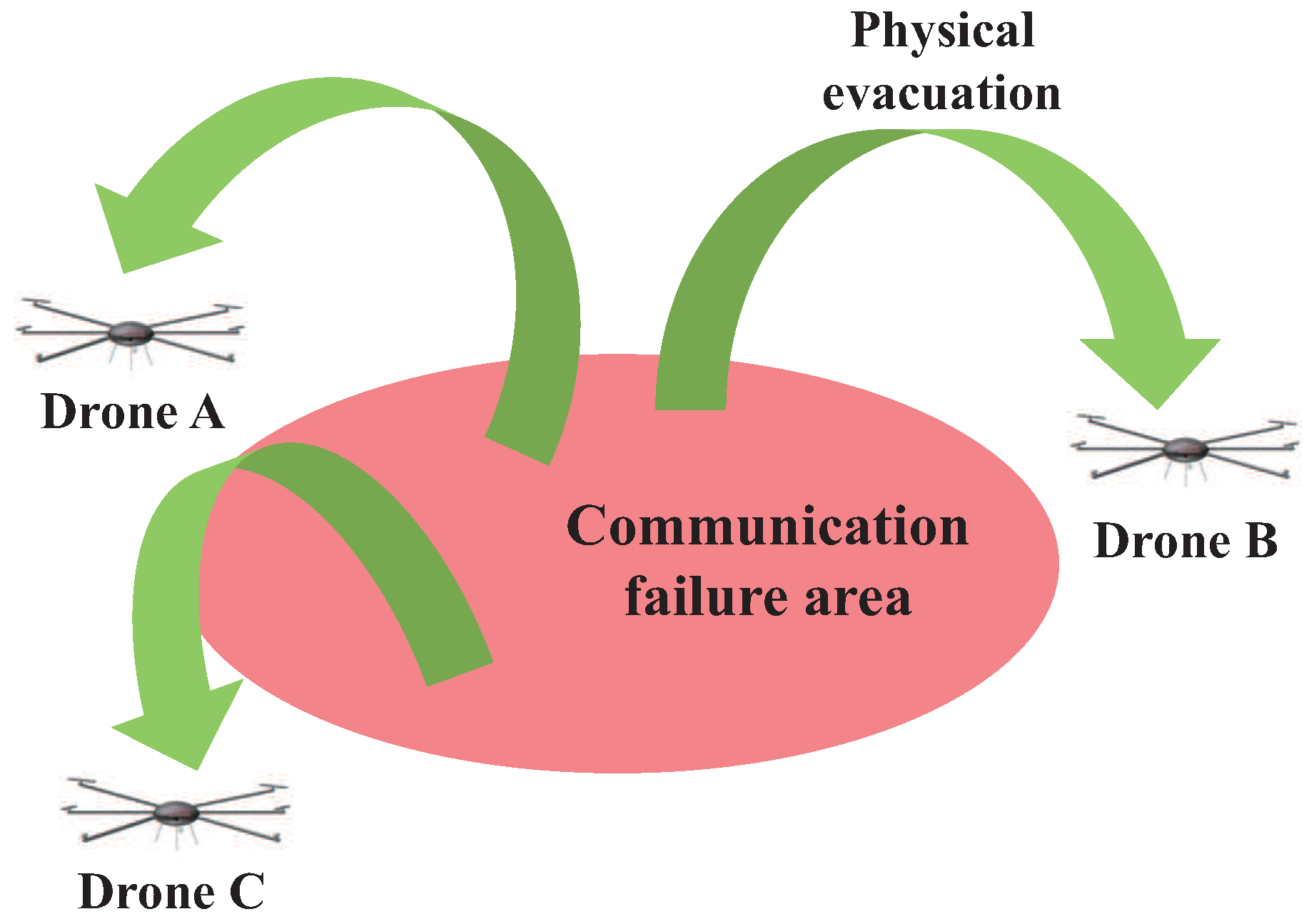
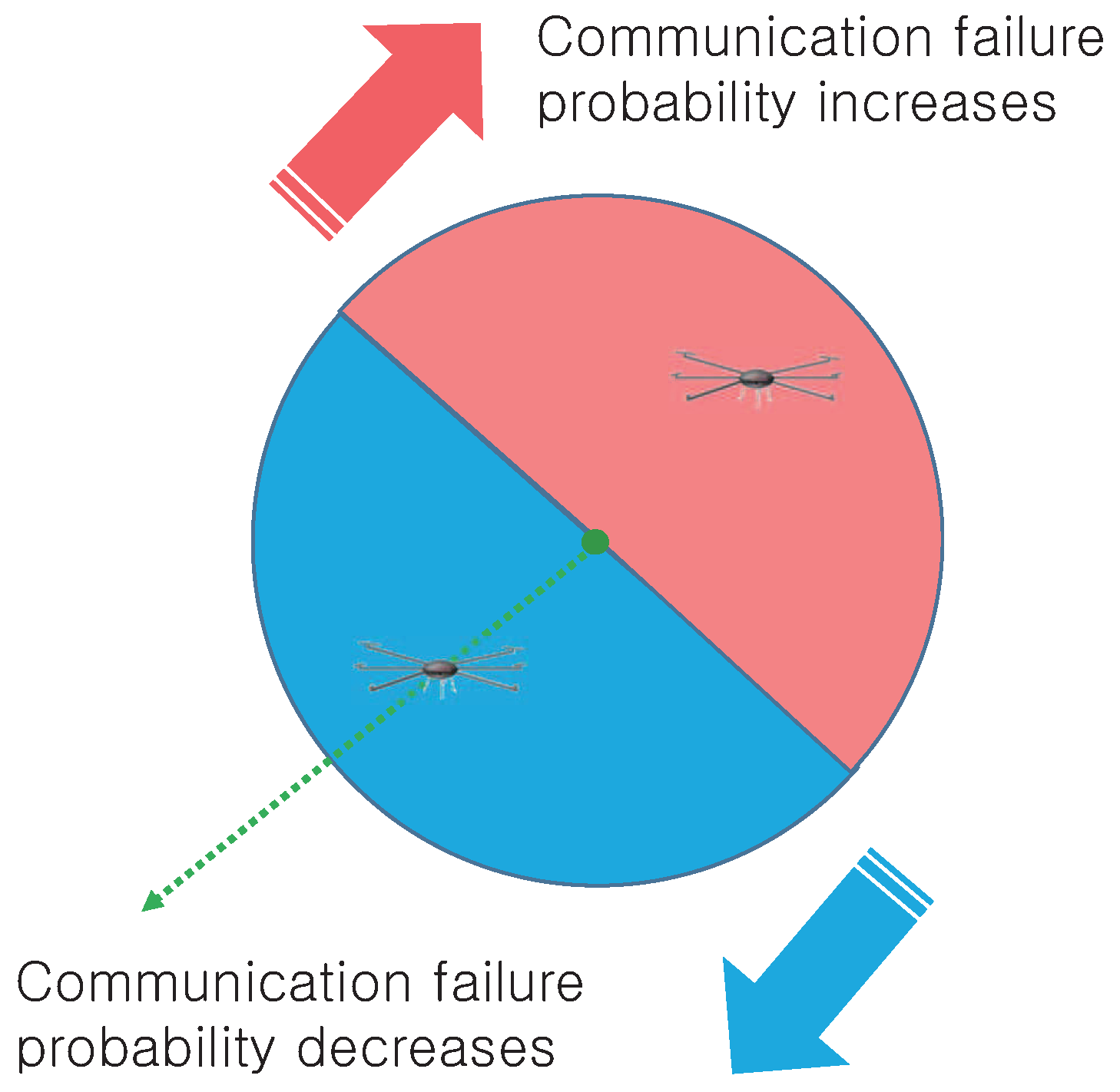
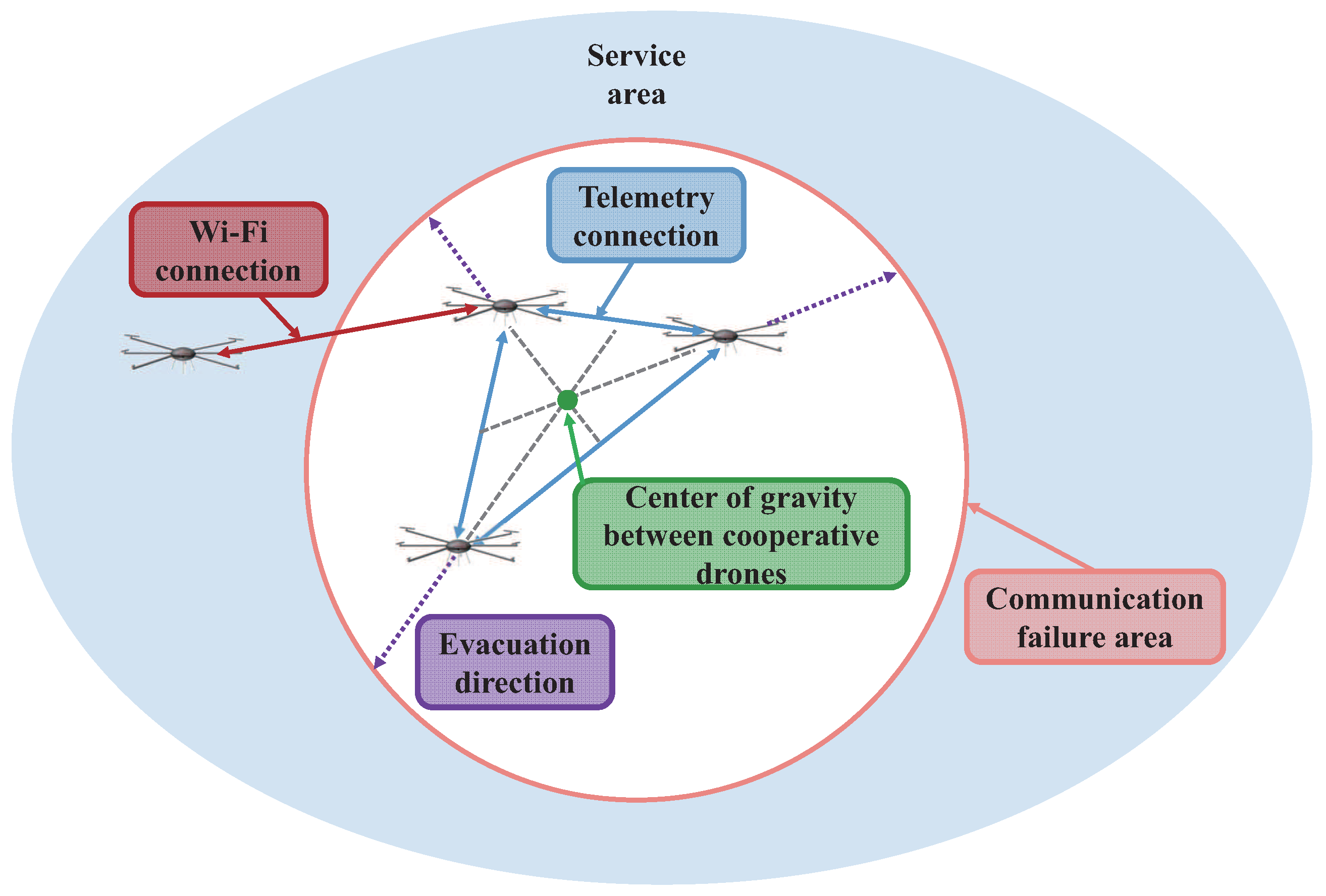

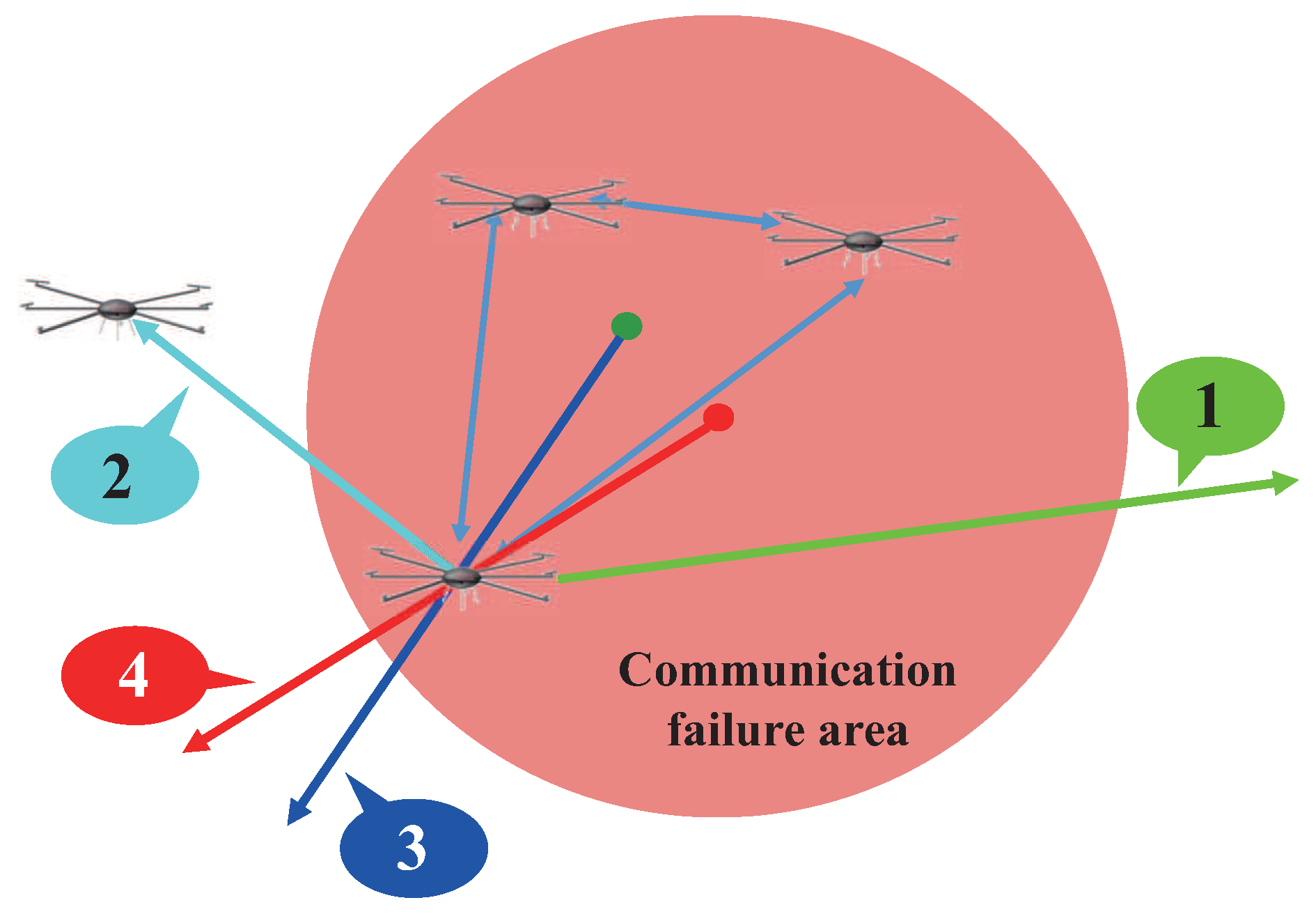
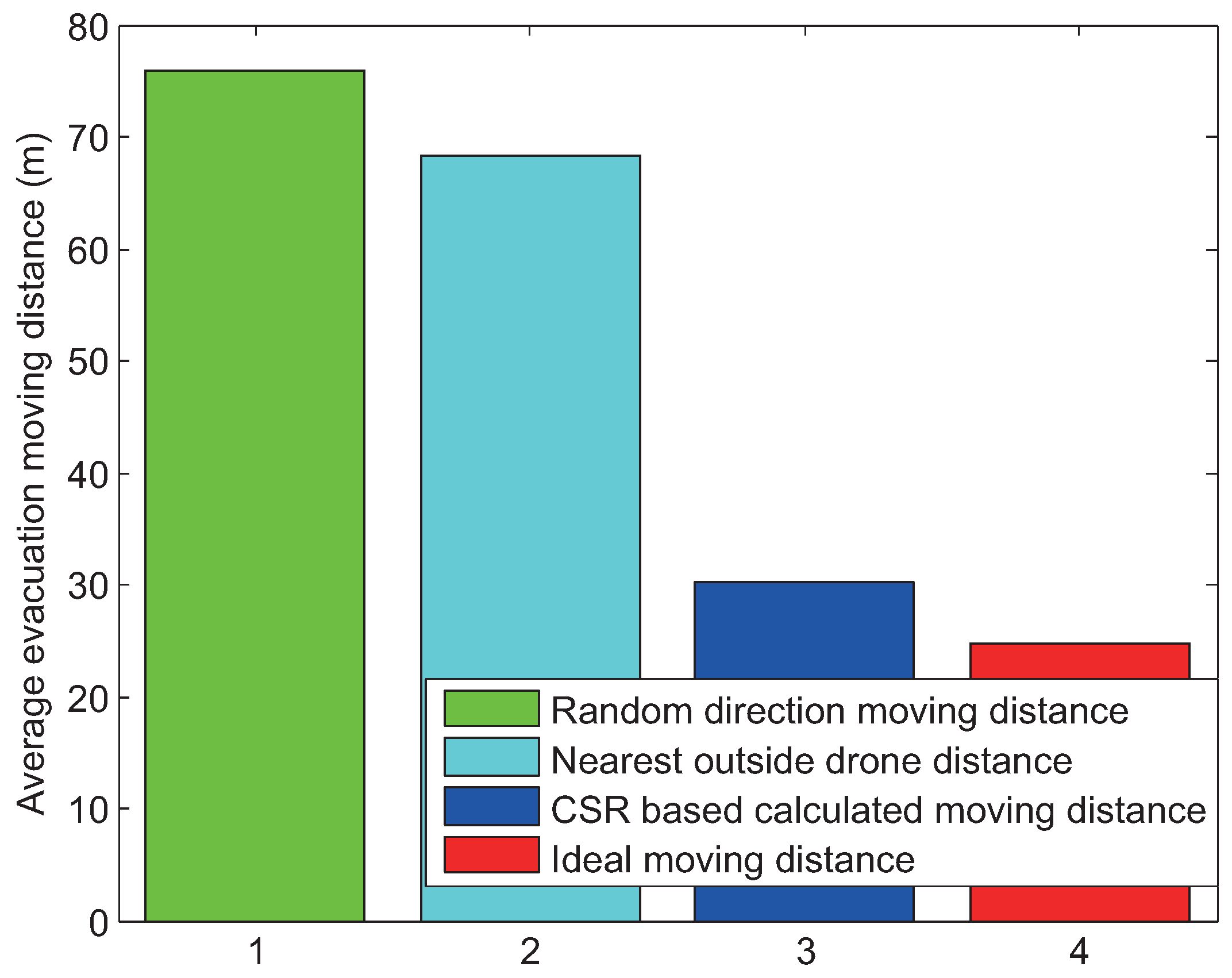
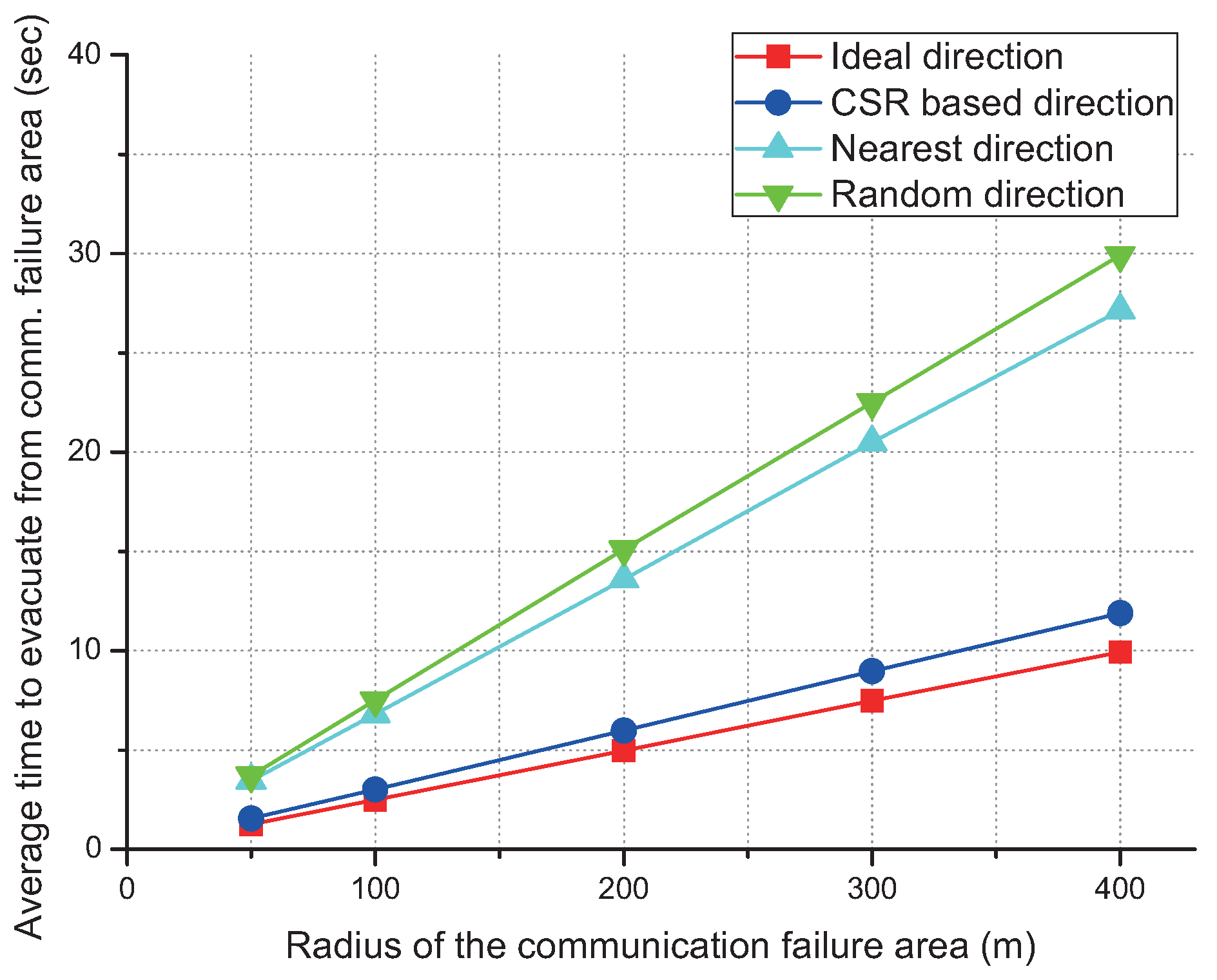

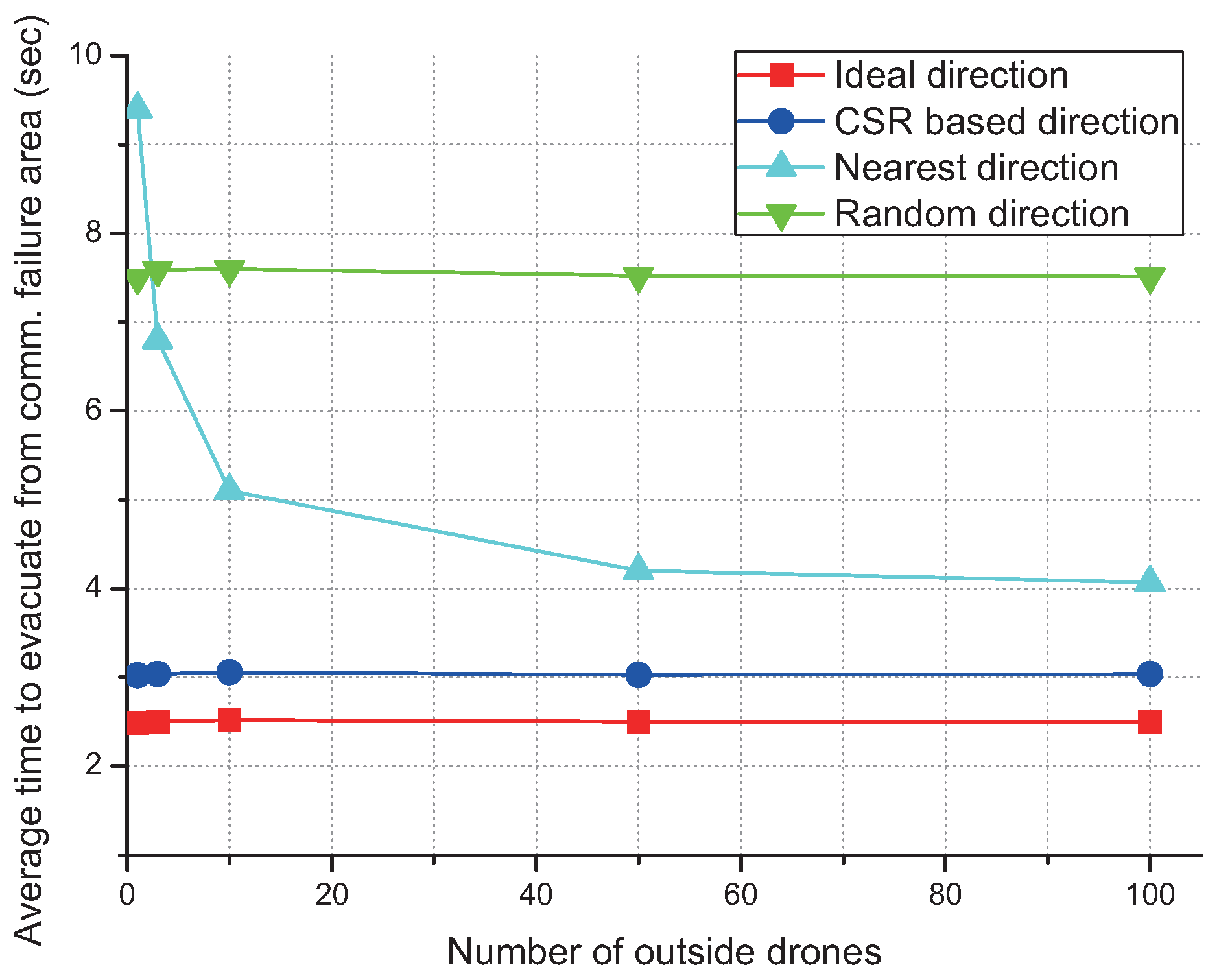
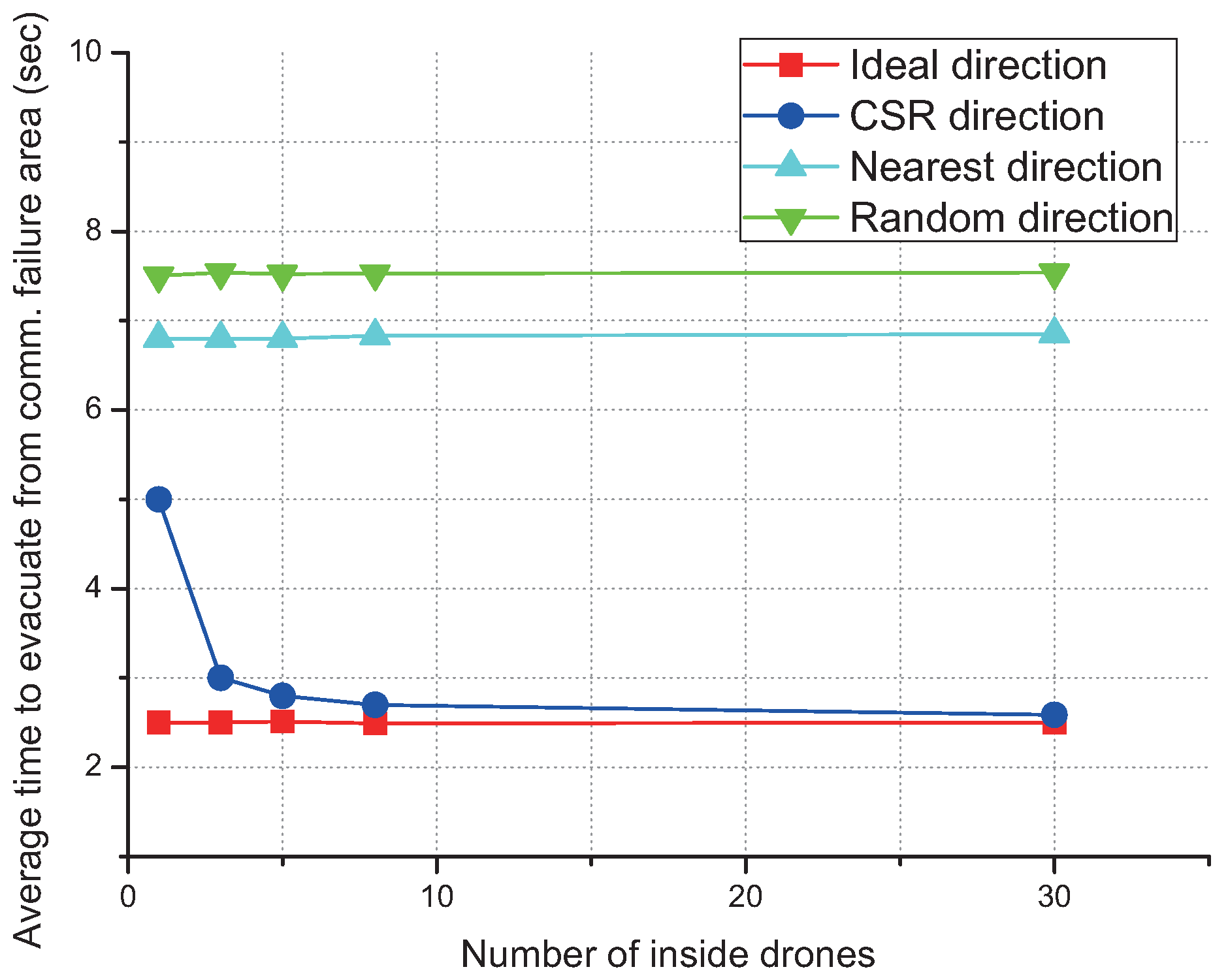
| Parameter | Value |
|---|---|
| Simulation tool | MATLAB (R2013a 8.1.0.604) |
| Shape of the failure area | Circle |
| Radius of the failure area | 100 m |
| Drone flying speed | 10 m/s |
| Maximum evacuation distance | 200 m |
| Channel error probability | 0.01 |
© 2017 by the authors. Licensee MDPI, Basel, Switzerland. This article is an open access article distributed under the terms and conditions of the Creative Commons Attribution (CC BY) license (http://creativecommons.org/licenses/by/4.0/).
Share and Cite
Kang, J.-H.; Kwon, Y.-M.; Park, K.-J. Cooperative Spatial Retreat for Resilient Drone Networks. Sensors 2017, 17, 1018. https://doi.org/10.3390/s17051018
Kang J-H, Kwon Y-M, Park K-J. Cooperative Spatial Retreat for Resilient Drone Networks. Sensors. 2017; 17(5):1018. https://doi.org/10.3390/s17051018
Chicago/Turabian StyleKang, Jin-Hyeok, Young-Min Kwon, and Kyung-Joon Park. 2017. "Cooperative Spatial Retreat for Resilient Drone Networks" Sensors 17, no. 5: 1018. https://doi.org/10.3390/s17051018








